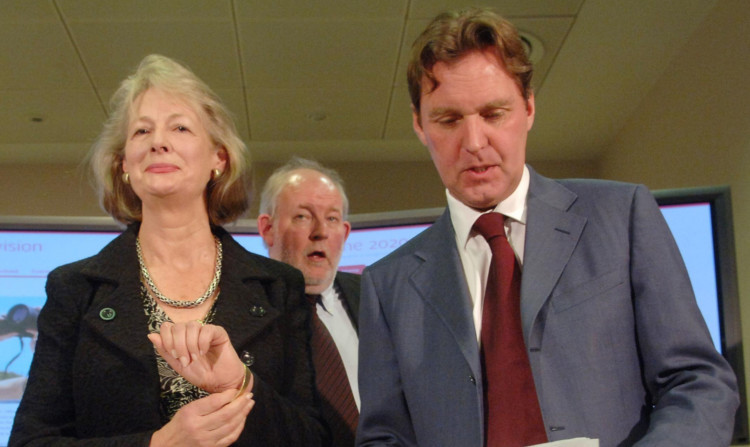
Baroness Jay provokes fury by saying independence would “not automatically” follow a ‘Yes’ vote.
Independence will “not automatically” follow a Yes vote in September’s referendum, according to a Labour peer and expert on the constitution.Baroness Jay echoed claims of a senior Coalition source last week that the status quo could continue despite a vote to leave the UK.Campaigners for the Yes side say it’s “panic stations” for the No campaign in the face of narrowing polls.
In addition, elected Scots MPs face years in limbo at Westminster whilst some MPs may be banned from claiming expenses and allowances after the next election.
The plan is being mooted as a back-door way of booting out Scottish members who could find themselves in power but with no one to represent.
Scottish MPs elected in 2015 will be able to sit for their full five-year term whatever the result of the independence referendum. Should Scotland vote Yes, triggering separation from the rest of the UK in 2016, that will leave Scots MPs in place but with constituents in a different country.
The proposal to withdraw expenses, including paying for travel to Westminster from Scotland, was put forward last week at a meeting of the House of Lords Constitution Committee considering the implications of independence.
Chair of the committee is Baroness Jay. She said: “In the build up to the vote, the issues we’re looking at can seem dry as dust but they would make quite a difference.
“What is the state of Scottish MPs after September, after the General Election next May? Even if their fares were no longer paid I suspect quite a few would keep turning up.”
Labour might demand they keep turning up should they win in 2015 with a majority dependent on their Scottish MPs. It’s one of the many potential headaches in the event of a Yes vote that the Constitution Committee is considering.
The first witnesses were former top Scots judge Lord Hope and constitution boffin, Professor Iain McLean. Both poured scorn on the SNP’s proposed independence timescale that would see the UK break up in March, 2016.
Added Baroness Jay: “You can’t just start unpicking the constitutional arrangements. There would have to be paving legislation at Westminster first, then there’s the question of who would carry out the negotiations.
“These issues raise the idea that just because Scotland voted for independence in the referendum, it wouldn’t automatically happen.”
Given polls point to Scotland rejecting independence it begs the question why the committee which includes former Scottish Secretary Ian Lang and Lord Goldsmith, whose legal advice to Tony Blair was crucial to the case for the Iraq War are bothering their brains with constitutional conundrums.
Explained Baroness Jay: “It’s not a good idea to be complacent. If you talk to the average MP, let alone the average person in the street, they haven’t given a moment’s thought to it. Not enough people are thinking about all the potential issues and we’re hoping to get the conversation started.”
It is poetic that Baroness Jay finds herself chairing the committee considering these issues her father, Jim Callaghan, was the Prime Minister who set Scottish devolution in train when he agreed to the first referendum on the issue back in 1979 as part of a deal to keep his lame duck Labour administration in power. That referendum was won, but not on a big enough turnout, delaying the return of a Scottish Parliament by 20 years.
Added Baroness Jay: “I’m not prepared to take the ancestral blame for where we are now. But I don’t think anyone would argue that my father set one foot in front of the other down this path.”
However she admits that the course that has led to an independence referendum was only set due to the Callaghan
government’s determination to avoid an election.
She added: “Devolution was not one of my father’s passions. The decision to grant a referendum was connected into the politics of the time.”
The Callaghan government was also the last time the UK had anything approaching a coalition when Labour shacked up with David Steel’s Liberals for a period.
Baroness Jay’s committee has just published a report on how the current Coalition works.
It calls for more explicit agreement between David Cameron and Nick Clegg on where their parties can disagree and more time for the Government to be formed should voters return another hung parliament in 2015.
Baroness Jay went on: “We must get this sorted so we don’t have the sort of frenzied atmosphere that there was on the Friday following the 2010 election when Gordon Brown was accused of squatting in Number 10.
“There are lessons that can be learned.”

Enjoy the convenience of having The Sunday Post delivered as a digital ePaper straight to your smartphone, tablet or computer.
Subscribe for only £5.49 a month and enjoy all the benefits of the printed paper as a digital replica.
Subscribe